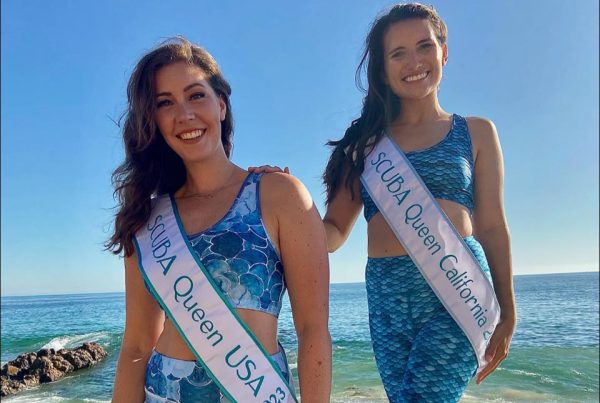The Marine Life Protection Act (MLPA) Blue Ribbon Task Force has recommended marine protected areas for California’s north central coast. The recommendation includes a preferred alternative and three other proposals that will help the State of California improve the design and management of its marine protected areas (MPAs). This recommendation will be presented to the California Fish and Game Commission, the decision-making body under the MLPA.
“Our effort has extended for 15 months, with over 50 days of formal meetings and public workshops, to develop and adopt recommended alternative MPA proposals for the north central coast,” said Susan Golding, chair of the task force. “We are confident that the work of all the stakeholders and the task force has created an excellent preferred alternative that will increase ocean protection.”
In spite of this, many diver groups are against the proposals as it closes key areas popular with abalone hunters including Fisk Mill Cove, Horseshoe Cove, Point Arena, Kruse Ranch, Jenner and more.
The MPA proposals are based on the efforts of a group of 45 stakeholders and their alternates that worked with MLPA Initiative staff in an intensive stakeholder process. Marine constituencies represented in the stakeholder group included recreational angling and diving, commercial fishing, ports and harbors, conservation, business, and other government agencies with marine protected area responsibilities.
After 12 months of formal meetings, innumerable informal meetings, and input and review from a science advisory team, the stakeholder group developed three MPA proposals for the north central coast, identified as proposals 1-3, 2-XA and 4. The task force determined that all three proposals were worthy of consideration.
Ultimately, the task force voted to blend elements of all three proposals in developing its preferred alternative, which consists of nine state marine conservation areas (8.4 % of the study region), two state marine parks (0.5%), eleven state marine reserves (11.6%), and two state marine recreational management areas (0.2%).
For Summary of North Central Coast MPA Proposals, refer to www.dfg.ca.gov/news/news08/mlpa_08002.html.
“These packages reflect a significant and invaluable amount of work by many people, including our stakeholders and the science team,” Executive Director Ken Wiseman stated. “Our hope is that when the commission begins its deliberations about MPAs along the north central coast, it will recognize the open and transparent process we conducted with stakeholders and the commitment they made to developing these proposals.”
The California Fish and Game Commission will automatically consider existing MPAs as the “no project” alternative during the state regulatory process. All proposals provide some level of protection to living marine resources, with different approaches and emphasis using reserves, parks and conservation areas. The final decision about which proposals to forward and selection of the preferred alternative was reached after the task force received evaluations by the science advisory team and staff, as well as extensive input from stakeholders and the public.
In addition to MPAs, the task force recommended seven special closures to offer additional protection to seabirds and marine mammals from disturbance, which is not necessarily addressed by MPAs. Special closures prohibit or limit human access within a specific distance of high diversity and abundance areas for marine birds and mammals.
The task force recommendations are scheduled to be delivered to the commission in June. The commission will then review and assess the proposals with advice from the science advisory team that has been assisting the task force since June 2007.
In 1999 the state enacted the MLPA, which directs state agencies to reexamine and redesign California’s system of marine protected areas with the goal of increasing its coherence and effectiveness at protecting the state’s marine life and habitats, marine ecosystems, and marine natural heritage, as well as to improve recreational, educational and study opportunities in marine ecosystems that are subject to minimal human disturbance.
To achieve the goals of the MLPA, the California Resources Agency and DFG partnered with the Resources Legacy Fund Foundation to establish the MLPA Initiative; this public-private partnership is designed to help the state implement the MLPA. Led by former San Diego Mayor Susan Golding, the five-member MLPA Blue Ribbon Task Force was formed by Secretary for Resources Mike Chrisman to oversee the initiative process.
Making recommendations for MPAs along the north central coast, utilizing the best readily available science and the advice of stakeholders, is one of a number of steps being taken to comply with the MLPA, implementation of which is part of Gov. Arnold Schwarzenegger’s Ocean Action Plan.
A map of the alternatives are posted to the MLPA website at http://www.dfg.ca.gov/mlpa/northcentralcoast.asp.









